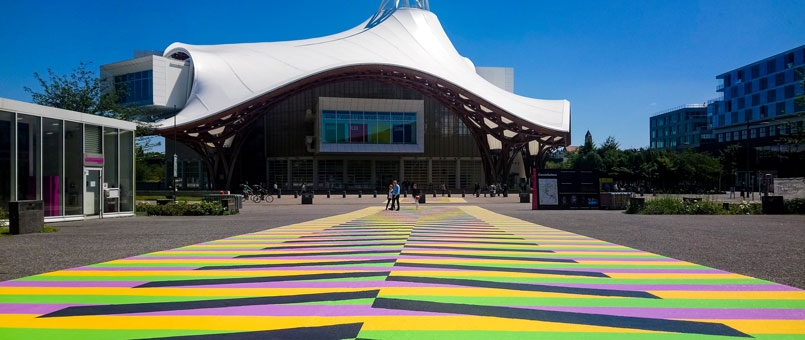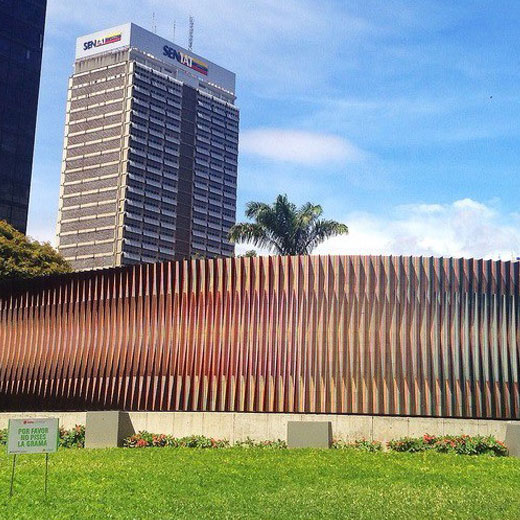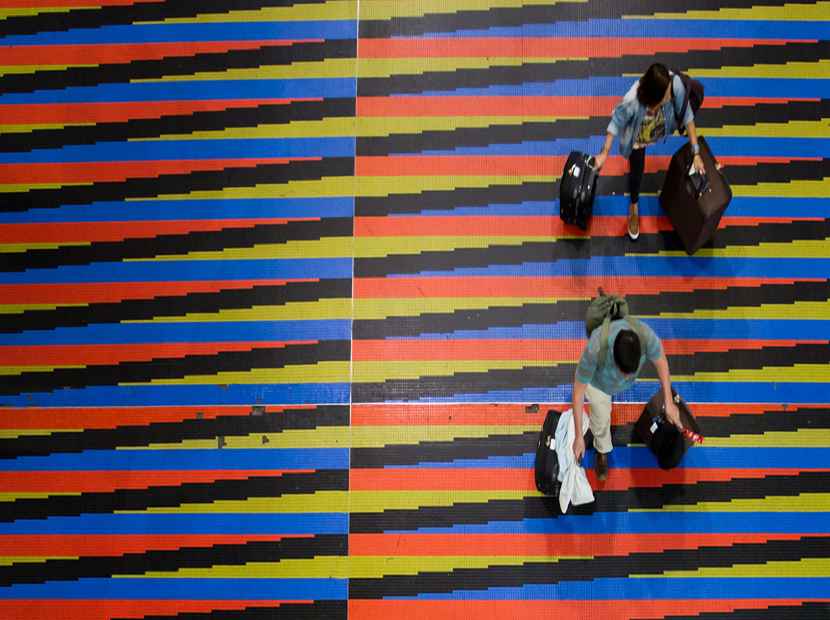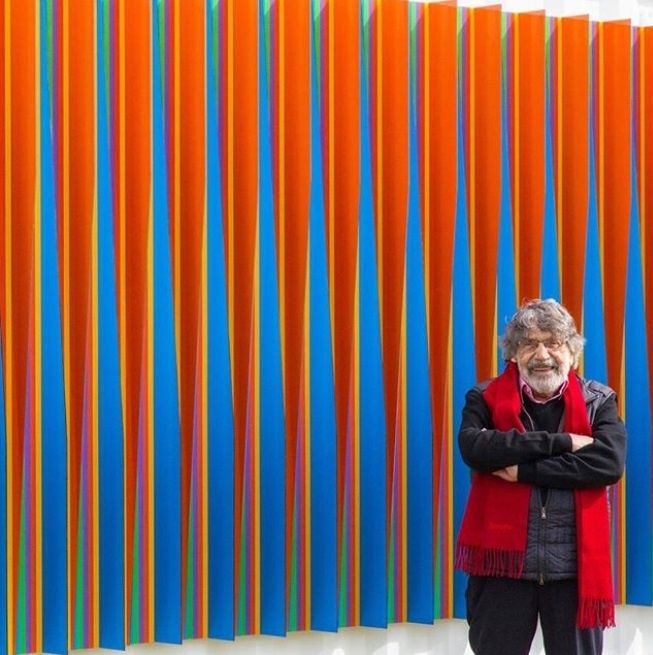Long Live the King of Color
Caracas-born Carlos Cruz-Diez, one of the most important visual artists of the 20th century, is dead. He turned science into art, and art into a game we all could take part of.


Photo: El Universal, retrieved.
On July 28th, Venezuelans woke up to the news that visual artist and designer Carlos Cruz-Diez just died in Paris, where he lived most of his long, fruitful life (1923-2019.)
Caracas-born Cruz-Diez developed a visual language of his own in the 1960s, after following a classical art education in Caracas and jumping into graphic design and experimental art since the 1950s. He moved to Paris, but never lost his connection with Venezuela, where he taught art and design.
From Europe, he would soon be a global star of contemporary art; Cruz-Diez was celebrated around the world and his work was exposed in renowned museums. He’s considered one of the fathers of kinetic art, which plays with the viewer’s perspective to provide the illusion of movement. You can experience his large scale achievements in many cities, or enjoy at galleries the smaller pieces produced at his ateliers in Paris, Caracas, or Panama City.

From Europe, he would soon be a global star of contemporary art.
But for Venezuelans, his art is more than a source of enormous pride. We were surrounded by his color patterns, and got used to playing with them. For some of us, those works of art are as essential to the landscape of the Venezuelan cities as the mango trees or the zigzag shapes of the coastal cordillera. The sculptures and paintings by Cruz-Diez were soon integrated into architecture by the governments of the Venezuelan democracy, between 1958 and 1998. Along with another Venezuelan artist of the same global importance (Jesús Soto), Cruz Diez was the symbol of our democracy. His art was public. A promise of modernity. Oil income morphed into beauty.

His art was public. A promise of modernity. Oil income morphed into beauty.
And his “Cromointerferencia de color aditivo” for the Maiquetía airport became the background for the goodbye photo many Venezuelans take when leaving the country. He was with us to the very end.

He was with us to the very end.
A dramatic contrast with the public art commissioned by the Chávez years, more in line with the Soviet and Fascist views of art as propaganda.
Patricia van Dalen, a renowned Venezuelan visual artist based in Miami, says that if Soto showed color as volume, Cruz-Diez taught us how color could be intangible. He took materiality out of color. “His lab was the flat space,” says van Dalen, “and he turned it into a space of light. More than art, he made science.”
Cruz Diez researched so much about physics and the physiology of color perception, that he learned how to produce in our brains colors that were not in his pieces. You don’t see a Cruz Diez piece, you live it.

He learned how to produce in our brains colors that were not in his pieces.
The passing of maestro Carlos Cruz Diez, though expected for his old age, is the kind of news we see as the loss of another irreplaceable piece of the country we were proud of.
He will be missed, even when he left us so much.
Caracas Chronicles is 100% reader-supported.
We’ve been able to hang on for 22 years in one of the craziest media landscapes in the world. We’ve seen different media outlets in Venezuela (and abroad) closing shop, something we’re looking to avoid at all costs. Your collaboration goes a long way in helping us weather the storm.
Donate




